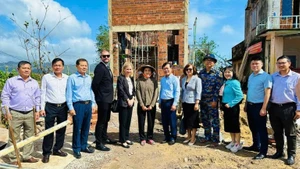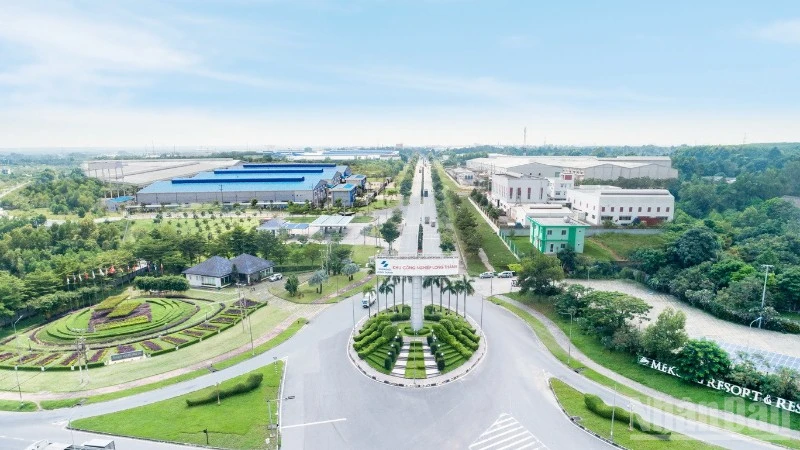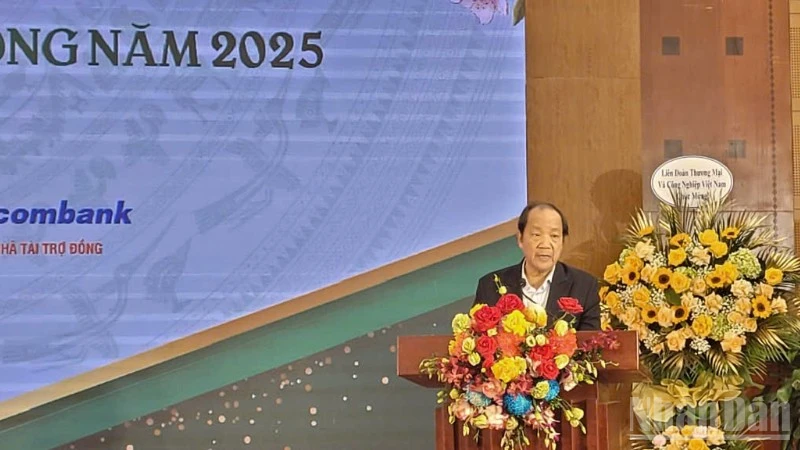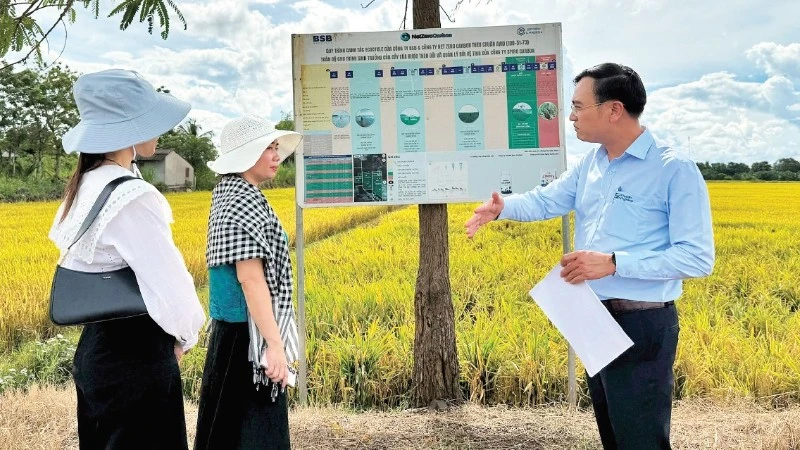The carbon market serves not only as a tool for achieving greenhouse gas emission reduction targets but also as an economic mechanism that helps businesses to innovate, access green financing, and integrate into global value chains.
Developing sustainable carbon market
According to experts, Viet Nam’s carbon credit market is currently well-positioned for growth. In line with the green transition trend, many businesses have made commitments and outlined roadmaps for emission reductions, aiming toward carbon neutrality.
The high demand for carbon credits provides a favourable condition for developing the domestic carbon market. As Viet Nam moves forward in realising its COP26 commitments and pursuing a low-carbon economy, important steps have been taken to build a legal framework for carbon credit trading.
Three key legal documents form the foundation including the Law on Environmental Protection 2020, which lays the legal foundation to officially recognize the existence and role of the carbon market in the national environmental management system, reflecting the government’s long-term vision in integrating economic and ecological strategies; Decree No. 06/2022/ND-CP, which sets out regulations on greenhouse gas emission reduction and ozone layer protection, laying the groundwork for the domestic carbon market by introducing emission reduction measures and establishing an emission management mechanism; and Decision No. 232/QD-TTg, issued by the prime minister on January 24, 2025, which approved a project on the establishment and development of a carbon market in Viet Nam. The project aims to support the reduction of greenhouse gas emissions in line with the country’s Nationally Determined Contribution (NDC) commitments while creating a new source of funding for emission reduction activities.
The overarching goal is to achieve net-zero emissions by 2050. According to the project, Viet Nam will pilot a domestic carbon trading platform from June 2025 through 2028, with official operations scheduled to begin in 2029. Key industries such as energy, steel, cement, agricultural processing, and transportation are gradually participating in mechanisms for measuring, reporting, and verifying greenhouse gas emissions.
A number of pioneering enterprises have proactively invested in clean technologies, improved energy efficiency, and sought opportunities to trade carbon credits both regionally and globally.
Synchronising institutions to build a carbon market
For Viet Nam, the development of a carbon credit market is not only a means to fulfil international climate change commitments but also plays a pivotal role in attracting investment, facilitating technology transfer, and enhancing the country's economic competitiveness.
However, Viet Nam's carbon credit market is currently facing several significant challenges. These include an incomplete legal framework, underdeveloped technical infrastructure, limited corporate capacity, a shortage of high-quality human resources, low awareness among businesses of the carbon market's benefits, and inefficient intersectoral coordination.
Dr. Ho Cong Hoa, from the Academy of Policy and Development, noted that Viet Nam is at a strategic juncture to shape a carbon market aligned with its low-carbon economic development goals and its commitment to achieving net-zero emissions by 2050. While initial steps have been taken to establish a legal framework, the carbon market must be further developed through concrete, robust actions to ensure it operates effectively, transparently, and in line with international standards.
Lessons from countries that are adopting early show that the key to success lies in having a comprehensive and flexible legal framework, rigorous monitoring and enforcement mechanisms, and active participation from the private sector and financial institutions.
Clear policies on quota allocation, transparent taxation, and a sound strategy for revenue use are essential drivers for the long-term growth of the carbon market.
Therefore, Viet Nam needs to review, revise, and supplement any missing or unclear provisions in the draft amendments to Decree No. 06/2022/ND-CP and the forthcoming decree on the carbon exchange, especially in critical areas such as the legal classification of carbon credits as commodities, quota auctioning mechanisms, offset and international credit systems, sanctions and transparency of violations, use of revenues, and international linkages under Article 6 of the Paris Agreement.
Additionally, establishing a strong inter-ministerial coordination mechanism and investing in a robust Measurement, Reporting, and Verification (MRV) system are essential to ensure the market functions transparently and responsibly, thereby attracting both domestic and international green investments.
Dr. Dang Hoang Ha from the Trade Union University emphasised that one of the key directions for developing the carbon credit market in Viet Nam is to gradually remove existing barriers in the economy. Doing so will lay the foundation for a market that is substantive, effective, and sustainable.
The expert stressed that to fully harness the potential of carbon credit trading, Viet Nam must finalise detailed regulations to support the development of both domestic and international carbon markets. Participating in the carbon market offers a valuable opportunity to generate financial resources, adopt modern low-carbon technologies, and collaborate with the global community to achieve greenhouse gas (GHG) emission reduction goals.
To establish and develop a carbon market in Viet Nam, it is essential to develop and enforce systems for GHG inventory; emission monitoring; and measurement, reporting, and verification (MRV) in a transparent and accurate manner that meets international standards. Each sector must also have clearly defined emission reduction roadmaps.
In addition, Viet Nam should actively connect with global carbon markets by engaging in international carbon credit mechanisms and promoting bilateral and multilateral cooperation for cross-border carbon credit transactions. A particular priority is the harmonisation of carbon pricing policies with broader strategies for green transition and sustainable development. These policies must be organically integrated with the national strategies on renewable energy development, circular economy, technological innovation, digital transformation, and social welfare.
Revenue from carbon taxes and carbon trading must be allocated transparently and should prioritise reinvestment in green infrastructure, support for businesses to adopt clean technologies, development of renewable energy, and strengthening resilience among vulnerable communities.
Crucially, Viet Nam must also vigorously implement a green finance mechanism, including green credit, green bonds, and emission reduction investment funds. These instruments will help mobilise both domestic and international resources to advance the country’s Net Zero agenda.
















